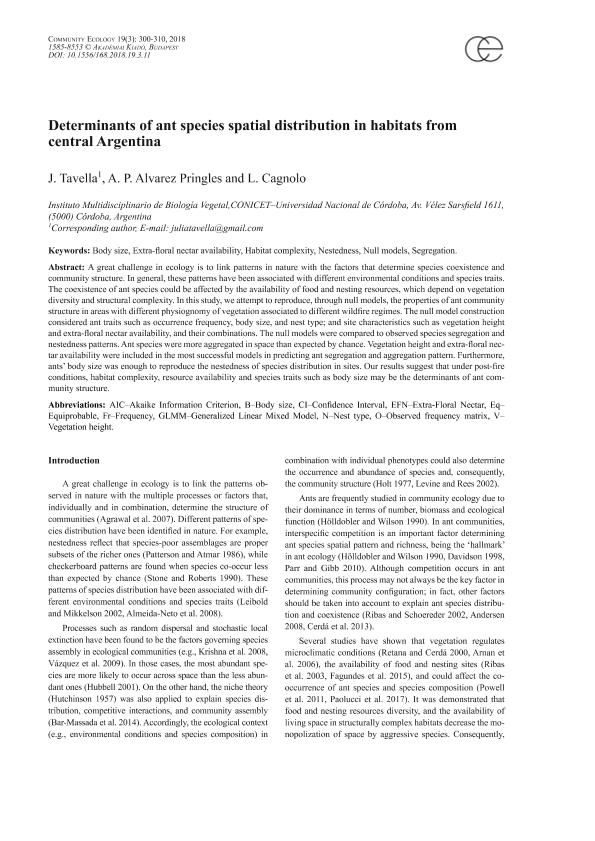Artículo
Determinants of ant species spatial distribution in habitats from central Argentina
Fecha de publicación:
12/2018
Editorial:
Akadémiai Kiadó
Revista:
Community Ecology
ISSN:
1585-8553
e-ISSN:
1588-2756
Idioma:
Inglés
Tipo de recurso:
Artículo publicado
Clasificación temática:
Resumen
A great challenge in ecology is to link patterns in nature with the factors that determine species coexistence and community structure. In general, these patterns have been associated with different environmental conditions and species traits. The coexistence of ant species could be affected by the availability of food and nesting resources, which depend on vegetation diversity and structural complexity. In this study, we attempt to reproduce, through null models, the properties of ant community structure in areas with different physiognomy of vegetation associated to different wildfire regimes. The null model construction considered ant traits such as occurrence frequency, body size, and nest type; and site characteristics such as vegetation height and extra-floral nectar availability, and their combinations. The null models were compared to observed species segregation and nestedness patterns. Ant species were more aggregated in space than expected by chance. Vegetation height and extra-floral nectar availability were included in the most successful models in predicting ant segregation and aggregation pattern. Furthermore, ants' body size was enough to reproduce the nestedness of species distribution in sites. Our results suggest that under post-fire conditions, habitat complexity, resource availability and species traits such as body size may be the determinants of ant community structure.
Archivos asociados
Licencia
Identificadores
Colecciones
Articulos(IMBIV)
Articulos de INST.MULTIDISCIPL.DE BIOLOGIA VEGETAL (P)
Articulos de INST.MULTIDISCIPL.DE BIOLOGIA VEGETAL (P)
Citación
Tavella, Julia Rita; Alvarez Pringles, Ana Paula; Cagnolo, Luciano; Determinants of ant species spatial distribution in habitats from central Argentina; Akadémiai Kiadó; Community Ecology; 19; 3; 12-2018; 300-310
Compartir
Altmétricas




